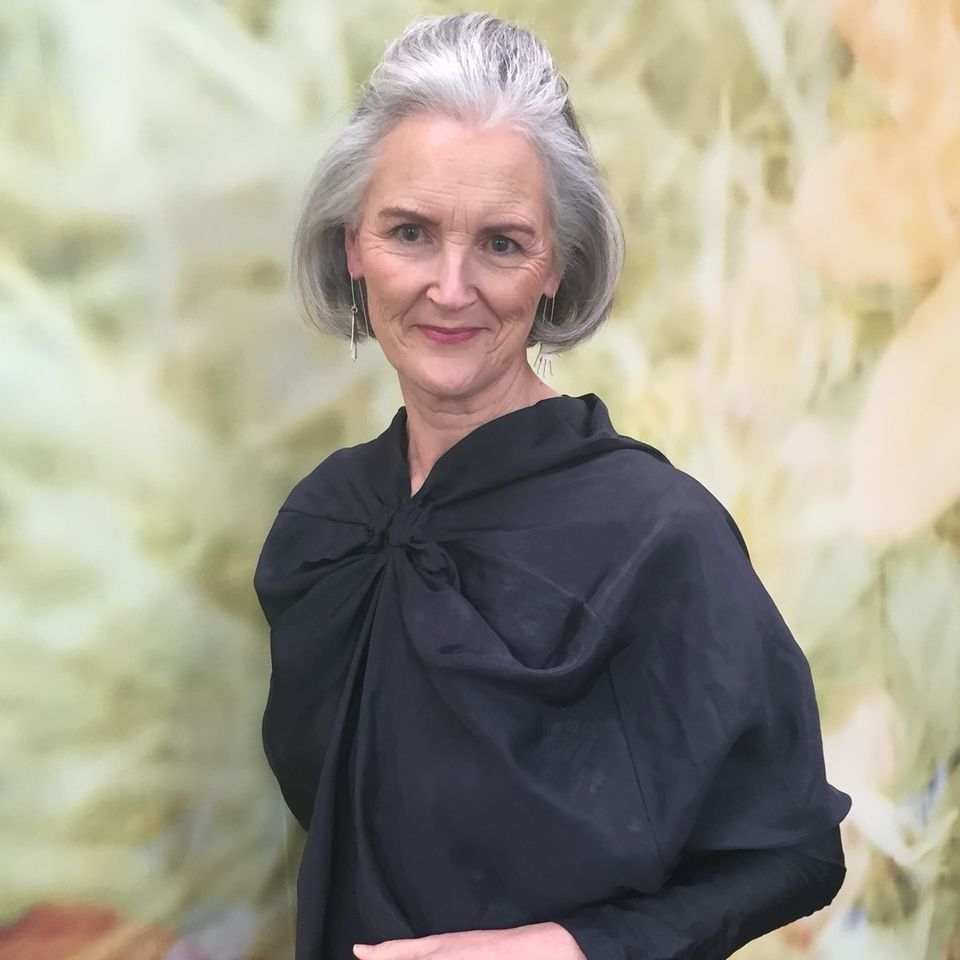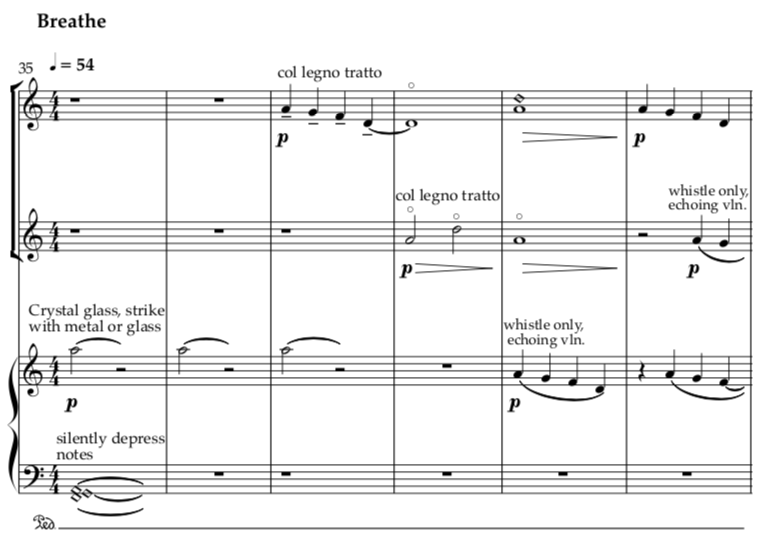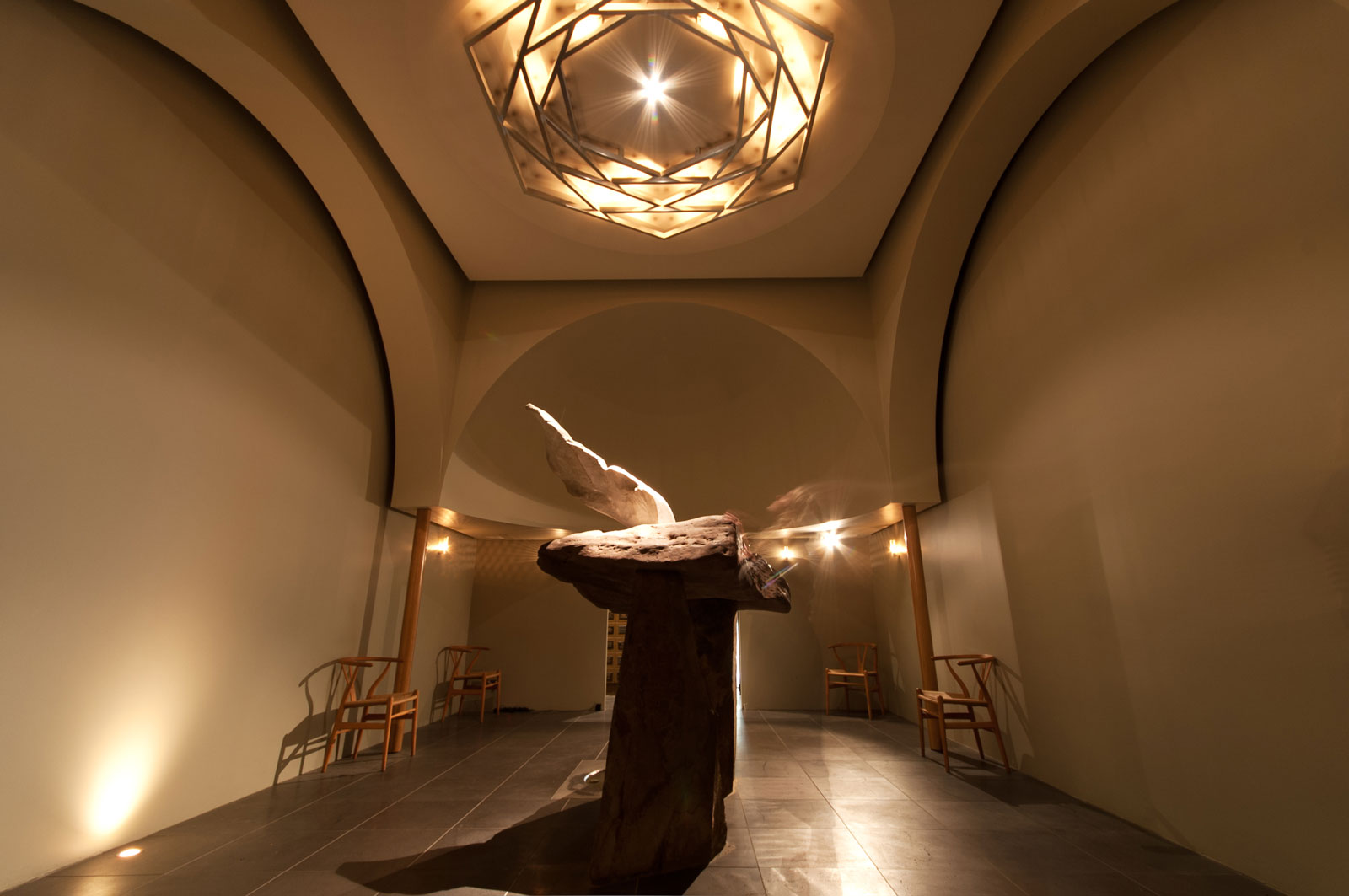
How did the willing air come into being?
I’d been mulling over the piece for months, making false starts and often finding it intractable, then during a visit to Melbourne, I chanced upon the Mingary Quiet Place, a sanctuary slightly hidden above a busy street. Being in that serene space had quite an impact - its unexpected location, its unassumingness, its absence of gold and riches, the striking central table rock with its rising Wing of the Dove. I got home, and started the piece again, with the desire to summon some of the stillness and peace of mind I’d experienced there. I felt the need to distil, to concentrate on sounds, rather than notes, to offer the listener a chance to metaphorically step into that world.
The title is a phrase taken from a poem by your mother - in what way has your mother influenced you as a creative artist?
Her sense of boldness, humour, and openness, she was free-spirited, disliked convention, and was a warm, permissive mother. She gave me an early love for things creative - playing piano, writing poetry, and photography. She let me buy a drumkit at 16, and made friends with my friends. I used another phrase of hers, a pink-lit phase for the title of a trio for the Nash Ensemble, and recorded myself speaking her poetry in an elegaic work hale, for 175 East.
The phrase the willing air, with its sense of possibility, and generosity, describes her, as it does the dedicatee, Jenny McLeod. They both had a strong sense of spirituality, a ready chuckle, and a ribald sense of humour.
 Eve de Castro-Robinson: the willing air extract from movement III - 'Breathe', b.35.
Eve de Castro-Robinson: the willing air extract from movement III - 'Breathe', b.35.
This piece is dedicated to the memory of Jenny McLeod, another creative feminine force. Like you, she also found composition a profound means of expressing spirituality. What do you think it is about sound that enables it to touch on that which is inconceivable?
I don’t think Jenny would have seen herself as a feminine force as such, a leather-jacketed bikie professor at 29, a constant renegade, a happy larrikin, fiercely independent. But I did feel a strong sense of sorority with her. My own composerly balancing of the creative and spiritual involves the belief that each dimension is beyond human understanding, and I think Jenny was the same. I like to choose sounds that express the ineffable; various soft bowings, vocalisations, extremes of register, percussive sonorities, flurries of notes...anything suggestive rather than didactic, more static than active. I’ve always been keen on creating sonic rituals, where musical tension lies not in harmony or rhythm, but in balancing opposing, or contrasting soundworlds. It used to worry me if people said my music was static, and now it doesn’t at all, rather the opposite. It’s not going anywhere, or telling you anything. It just is, like The Quiet Place, and the listeners bring themselves to dwell within it.
How does this new piece sit within your creative practice? Is it a stepping stone for you or a milestone?
It’s a continuation of my practice, as there are recognisable sonic hallmarks and tendencies throughout my oeuvre, but listeners should hear a stillness, and an intimacy in the sounds, which I hope will draw them in. There are moments of quietude. This piece is a step further in the direction of sonic ritual.
What is meditation for you and how does this transpire in your compositions?
I see meditation as an intrinsic part of the creative process, and don’t necessarily separate it as an activity. The act of stilling the mind, allowing it to be open, focussing attention and awareness are all bound into the act of creativity, that is bringing a new creation to life. That’s why I take ages to write something, I simply can’t hurry this process. I think the Western obsession with wellness has unnecessarily disassociated the ideas of silence and contemplation from everyday life, and commercialised them into Mindfulness, and Meditation classes for the worried well.
How has it been working with NZTrio on this piece? The score seems quite intuitive and also a meditative experience for the performers themselves. Have you had much input into the performance of the work?
I try to write all details into the score so that everything will be clear for the players, but of course the transformation of the notes is in their hands. At the point of writing, I’m yet to attend a rehearsal, but we’ve been in touch and they all seem very positive. I know them all, they will tackle anything, and have absolute creative integrity, which is why composers love them!
What does the future hold for your approach to composing?
I’ve never set much store on predicting what I’ll do creatively! I generally hope to surprise myself. Each project requires a different mindset and approach, and right now I’ve got orchestral, recording, pop, and collaborative projects on the table.
[Photo Credit: Sarah Walker]
